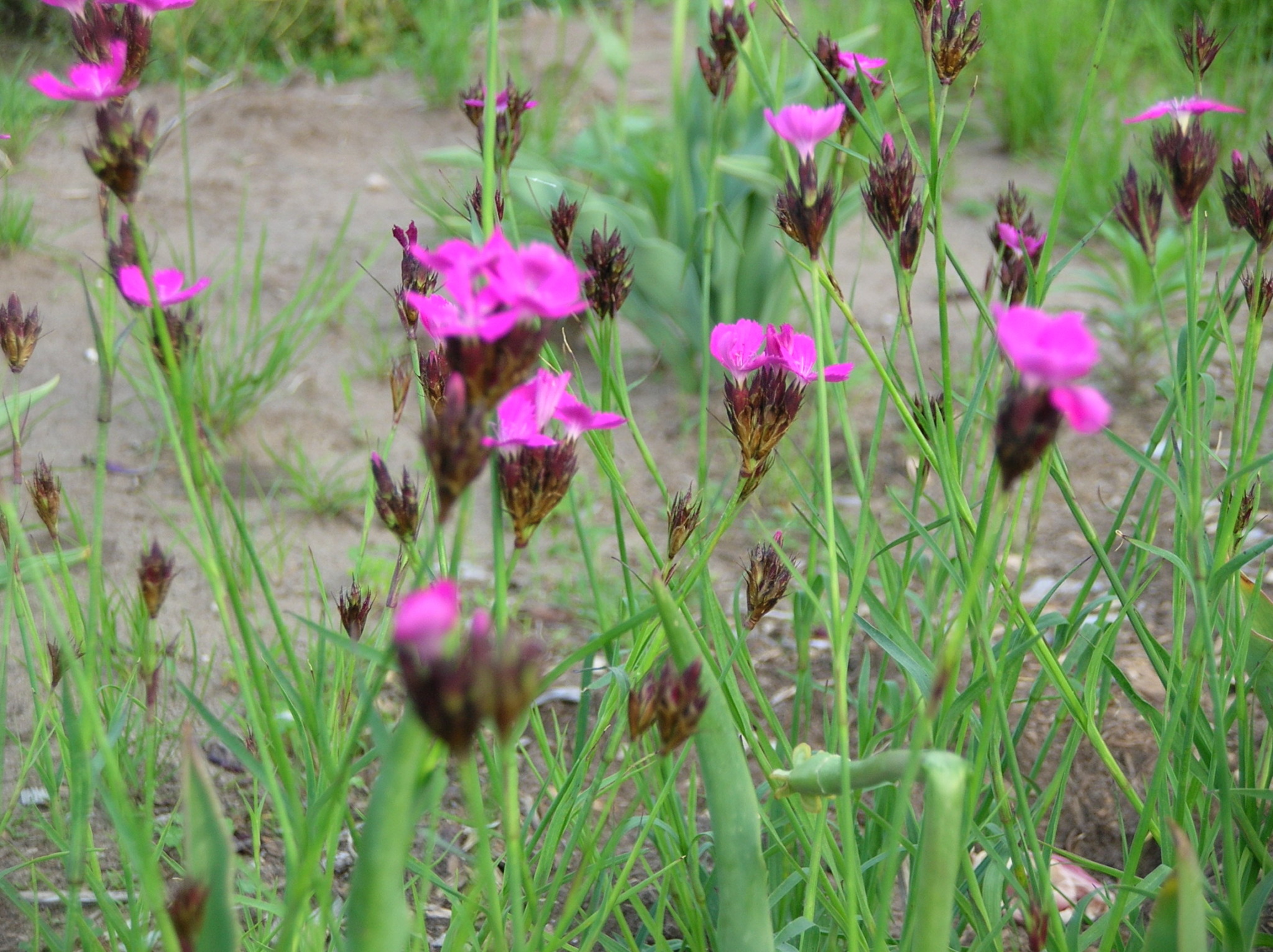Description
Rosy carmine pink flowers atop wiry stems from June until frost
Deep reddish pink flowers atop wiry stems from June until frost
Rosy carmine pink flowers atop wiry stems from June until frost
Violet racemes all summer through fall
Size: 36” x 12”
Care: Sun, well-drained soil
Native: Southern Europe
Both the Latin and common names are related to flax. Linaria comes from “linum” which is Greek for “flax” and toadflax includes the word “flax.” The leaves of Linaria purpurea resemble flax leaves. According to 17th century English herbalist, John Parkinson, the plant “causes one to make water.” Grown by English plantsman and explorer, Tradescant the Elder, 1634.
OUT OF STOCK
Rosettes of succulent leaves
Size: 4” x 4”
Care: sun in well-drained to moist well-drained soil
Native: Alps & Pyrenees Mountains
Grown in gardens for thousands of years. Sempervivum means “live forever.” Romans planted Hens and chicks on their roofs to ward off lightning. As a succulent it holds water and is probably more difficult to catch fire. “This practice was preserved for historians when Charlemagne (720-814), first Holy Roman Emperor and unifier of a large part of northern Europe, ordered that all villagers within his crown lands plant houseleeks on their roofs, presumably as a safety measure. He decreed: Et ille hortulanus habeat super domum suam Iovis barbam. (And the gardener shall have house-leeks growing on his house. Capitulare de villis, about 795, LXX.)”
Fast-growing, pyramidal-shaped deciduous conifer. The orange to brown trunk base tapers and thickens with up to a dozen large buttress-like root flares extending several feet up the trunk. Feathery, fern-like, soft foliage emerges light green in spring, and turns red-bronze in fall before dropping. Its branches are well-attached and make excellent climbing.
Size: 70-90’ x 15-25’
Care: sun in moist to moist well-drained, slightly acid soil
Native: Szechuan China
Awards: Royal Botanic Garden Award of Garden Merit, Yew Dell Botanical Gardens’ Theodore Klein Plant Awards & Pennsylvania Horticultural Society Gold
From fossil records, dawn redwood is known to have existed as many as 50,000,000 years ago. However, it was not until 1941 that dawn redwood was first discovered growing in the wild near the town of Modaoqi China by Chinese forester, T. Kan. Seeds collected from the original site were made available to the Missouri Botanical Garden in 1947. Seedlings grown therefrom were planted in front of the Lehmann Building at MBG in 1952 where they have now developed into large mature trees (70’+ tall). Dawn redwood is a deciduous, coniferous tree that grows in a conical shape to 100’ tall. It is related to and closely resembles bald cypress (Taxodium) and redwood (Sequoia).
OUT OF STOCK
Atop a mound of spatula-shaped, crinkled leaves with scalloped edges rises a bounty of 4 to 5 inch tall spikes, each crowned with a hoard of tiny fuchsia-colored trumpets blowing their horns “look at me” in early to mid-summer.
Size: 4-8" x 8-12" spreading slowly by rhizomes
Care: sun to part shade in moist well-drained soil
Native: South Africa
Wildlife Value: Deer resistant. Attracts small bees and butterflies
English adventurer and naturalist William John Burchell (1781-1863) scoured South Africa from 1803 to 1815 collecting more than 50,000 specimens packed in 48 crates. In places unexplored he found insects, animals, fish and unknown plants, this being one. Although he published two volumes of his exploration, he did not finish the last, third volume, leaving another to write the botany. Premier English botanist George Bentham (1800-1884) took up the task authoring Labiatarum Genera et Species, published in 1834. He wrote the first published description and named this tiny plant with outsized charm.

